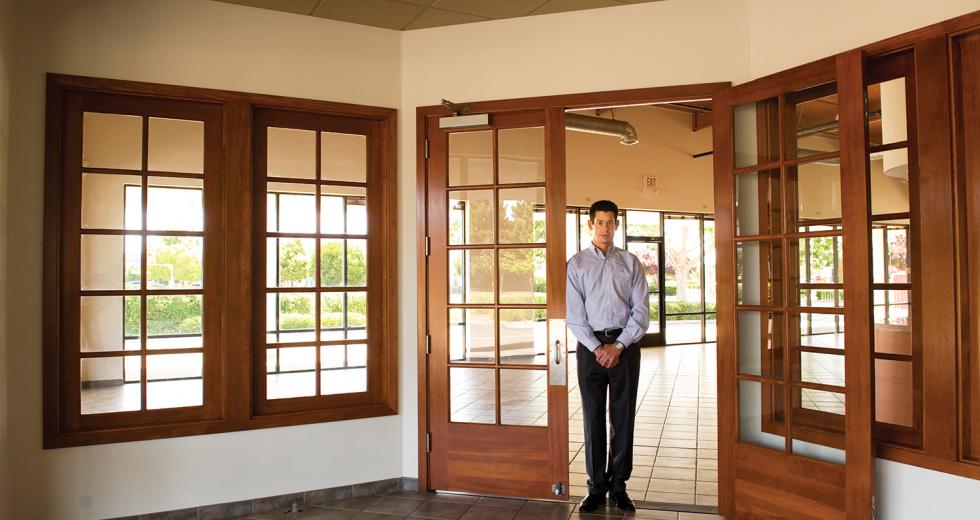Real estate sales and values have plummeted 40 percent the past few years, but the commercial retail market is buzzing with hungry buyers hunting both bargains and gems.
Banks have loosened their grip, real estate investment trusts are searching for higher returns and institutional buyers have returned to the table, pouring more money into the market. From April 2010 to April 2011, $412 million in commercial retail properties sold in the greater Sacramento area — a 113 percent increase from the prior year.
In fact, local sales of retail property were stronger than those nationwide, according to Real Capital Analytics Inc. based in New York. The average sale price per square foot for commercial retail in Sacramento was $161 versus $149 for the U.S. And cap rates in the Sacramento region were 8 percent compared to 7.8 percent nationwide.
A higher cap rate means higher yields and lower prices. For buyers, it’s a great time to shop.
“It certainly does make Sacramento attractive because investors get higher yields, but that also means that investors have put a higher risk premium on Sacramento retail than the market as a whole,” says Dan Fasulo, managing director and head of research for Real Capital Analytics.
Risk is a big part of the investment game now as about 25 percent of retail properties on the market are in financial distress, in foreclosure or in short sale, according to RCA. Buyers looking for good deals on retail centers are in luck. Rent values have plummeted 30 percent in the past few years, leaving some owners — who bought at the peak of the market — with hefty loans they now can’t pay.
Retail property owners who can’t support their mortgages are sometimes forced to sell buildings for less than they paid for them or let the bank take them back. These kinds of properties are selling for prices investors may not see again for more than a decade.
“You can buy an existing building now cheaper than it would take you to build one,” says Amy Lerseth, senior vice president for Buzz Oates Group of Cos., a Sacramento-based commercial real estate broker, property manager and developer.
Long-term investors can now grab a property for way below replacement cost and aggressively go after tenants. If they hold it for a few years, rents and property values will go up, making it a good investment, Lerseth says.
Investing in distressed properties with high vacancy rates can be a gamble, but investors like Ethan Conrad, CEO of Ethan Conrad Properties Inc., are up for the challenge. Conrad has purchased 15 properties in a little over a year, most of them retail.
“I’m a broker by background, so when I look at a building I know how tenants are going to look at it and what I need to do to lease it,” Conrad says.
Among Conrad’s buys is Elk Hills Plaza, which he purchased in May for $1.46 million. The 112,960-square-foot strip center on Baseline Road in Roseville had a 35 percent vacancy rate. His typical plan is to make improvements to draw tenants and negotiate rents a little below market to get the building filled. This strategy — offering tenants lower rents — pays off in higher occupancy and increased cash flow, Conrad says.
Alongside the bargains, high-quality properties are also selling well, but at high, prerecession prices. Cap rates on large retail centers anchored with national chain stores are demanding cap rates of 5 to 7 percent.
This market dichotomy is generating interest on far ends of the spectrum and attracting two different groups of buyers. Private local investors who don’t mind some risk are snapping up deals on unanchored centers with high vacancy rates. In the meantime, REITs and institutional investors are playing it safe by purchasing solid, high-quality properties with low vacancy rates, strong anchors, good tenants and good cash flow.
Why would owners want to sell these so-called trophy properties? Because they can demand a good price, Lerseth says.
“For a 5 or 6 percent cap rate, you’re not going to see prices better than that in the future,” Lerseth says. “There’s a lot of money out there now competing for a few well-placed properties.”
An example of one of these prized properties is the Folsom Gateway II retail center, located on Iron Point Road and East Bidwell Street, near Highway 50. Sold in December 2010 by CB Richard Ellis, this 115,239-square-foot power center was 95 percent leased and well anchored by Bed, Bath & Beyond, Ulta, Petsmart and DSW Shoes with long-term leases. The selling price was $36.7 million, or $319 per square foot.
The broker, Robert Cole, first vice president of CBRE Private Client Group in Sacramento, says it was the right time to sell as a lot of investors are competing for these core properties. His client, Dan Cole, CEO of the Evergreen Co. agreed the time was right.
“You can buy an existing building now cheaper than it would take you to build one.”
Amy Lerseth, senior vice president, Buzz Oates Group of Cos.
“The market became very active, the property was at its best and the leases were still long-term,” Cole says. “But we wouldn’t have sold if the timing hadn’t been right from a pricing standpoint.”
The interest in solid, high-quality commercial retail investment is spiking because interest rates are low. REITs that might normally invest in U.S. savings bonds are looking elsewhere because of the anemic 3.25 percent interest. The average cap rate on Sacramento retail buildings is 8 percent, luring REITs and institutional investors to put their money into commercial real estate for a higher return, Fasulo says.
“You only get about 3 percent yield if you buy a 10-year bond right now,” Fasulo says. “If you buy retail property in Sacramento and a tenant is paying rent for 10 years, you’re getting 5 percentage points higher.”
Another factor boosting sales is owners becoming more realistic about what their assets are worth, says Adam Lucatello, vice president of Colliers International in Stockton. Rent roles needed cleaning up to reflect today’s values.
“They still had tenants in there who were paying exaggerated rents from three or four years ago,” Lucatello says. “And the buyers were saying, ‘You have these rents now, but the market doesn’t indicate that’s where rents are today.’”
If an investor purchased a property with tenants paying high rents, they had to determine if they could get the same rent in a contract renewal, says Lisa Hodgson, senior vice president of Colliers International in Stockton. More than likely, she says, the tenant would ask for a 30 percent rent reduction, which is what the market is supporting now.
The big factor in current property valuation, though, is vacancy. In 2007, the average vacancy rate in the Sacramento region was 7 percent, compared to 13.8 percent today, according to Colliers International. However, the way properties are valued (location, anchor tenants, vacancy and income stream) is the same, says John Shaffer, senior research analyst at Colliers in Sacramento.
“If you have high vacancy, that’s a lower income stream than if the building was occupied,” Shaffer says. “The methodology is the same, but because of vacancies, the resulting value will be dramatically different than before the recession.”
Rent for space in a power center in Stockton in the second quarter was $18 per square foot at the high end and $12 at the low end. In Sacramento, the same space rented for somewhere between $39 and $24 per square foot, depending on location and quality of anchors.
And now that cap rates are dropping and prices are climbing in core markets, such as San Francisco, big investors are searching for properties in secondary markets like Sacramento, Hodgson says. Properties in the valley area, including Stockton, will sell more slowly than in Sacramento but boast lower second quarter vacancy rates — 11.3 percent.
The return of institutional investors and REITs to secondary markets may be why it’s rumored Westfield Group is selling its Downtown Plaza and Solano Shopping Mall in Fairfield. Evercore Partners in New York is reportedly handling those malls, but Senior Managing Director Martin Cicco didn’t respond to inquiries. Also, Catherine Dickey, vice president of communications for Westfield, declined to comment.
The possible sale of the struggling Downtown Plaza may not draw the usual suspects but could attract a more diverse group of investors now, Lucatello says. Typically malls are owned by large institutional investors or REITs.
“This is an opportunity for local players to jump in and get a good cap rate, whereas in the past they would get outbid by a larger company like General Growth Properties [Inc.],” Lucatello says. “They have a chance at a deal they otherwise wouldn’t.”
Recommended For You

In Real Estate We Trust
REITs in the new economy
With the real estate market in the tank, many investors are thinking twice about real estate investment trusts, or REITs. And that suits Jim Johnson just fine.

Commercial Lending Forecast
Softening standards with a chance of loans
This year could provide some of the first expansions in bank lending since 2008. So is the market back up to speed? No. But banks are slowly and smartly increasing their appetites for commercial lending, and the Capital Region will see its share of transactions.



